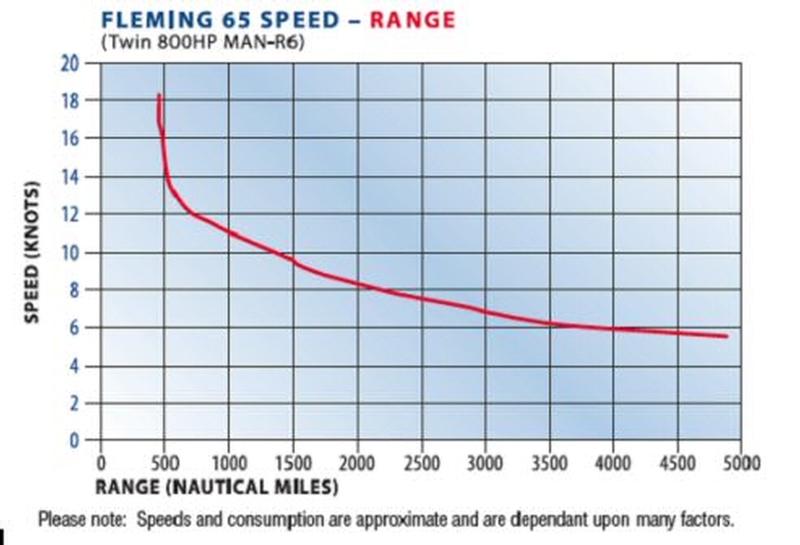The Fleming 65 was introduced in mid 2005 in response to a strong demand for an intermediate Fleming between the 55 and the 75. Her layout is very similar in concept to the 55, but the 65, being around 70% larger in displacement, offers much more interior and deck space than her smaller sibling.
We are very proud that a panel of thirteen judges from the Internationally respected 'Yachts' magazine voted the Fleming 65 best yacht in her class, worldwide, for 2006. Tony Fleming and his daughter, Nicky, went to Cannes to receive the trophy. As of February 2010, 24 Fleming 65s have been built at the highly regarded Tung Hwa yard in Taiwan, which has built every Fleming yacht since they were introduced in 1985.
As with all Flemings, special attention has been paid to the ease and safety in which the heavy duty ground tackle is set and retrieved. Originally designed for the Fleming 75, the 65's anchor platform is especially large and robust.
MoreOne of Fleming's signature design features is its wide side decks that enable safe, sure-footed movement from bow to stern while at sea and during docking manuevers.
MoreThe large cockpit space is beautifully finished with teak decking for its superior non-skid properties and sound dampening qualities.
MoreThe flying bridge is easily and safely accessed by the 5-step stairway from the pilothouse.
MoreThe large, spacious main saloon can be built with a number of different arrangements. A dedicated dining area can be located to starboard with a large settee area to port.
MoreA number of layouts are available for the 3-stateroom accommodations area.
MoreAccessed from an exterior hatch aft of the saloon doors that leads to a submarine-style door, the engine room is signature Fleming - well thought out, extremely functional and beautifully finished.
MoreThe aft lazarette houses the water tanks, steering gear and air conditioning compressors while also leaving ample room for storing cruising gear
MoreThe Fleming 65 pilothouse is the nerve center of the vessel and can be completely separated from the activities throughout the rest of the yacht by its bi-panel teak door.
MoreThe following performance curves represent the approximate speeds, fuel consumption and range of a Fleming 65 powered by twin MAN 800 hp diesel engines. The actual performance of an individual vessel will depend on many factors including, but not limited to, sea and wind conditions, load of vessel and the condition of the vessel's bottom and running gear.


All Fleming Yachts are built to comply with the appropriate marine and environmental regulations for the area in which the yacht is delivered.
USA - NMMA Certified Manufacturer fully complying with: ABYC, USCG and EPA regulations.
European - Built to CE-RCD Category "A" Ocean Standard using the relevant ISO standards.
Australia - Australian Standard 1799.1-2009
Canada - Transport Canada TP1332E 04/2010
Fleming Yachts Construction (HK) Ltd management and environmental systems have met and been approved by ISO 9001:2008 Quality Management Systems and ISO 14001:2004 Environmental Management Standards.
The question most manufacturers ask themselves when considering a new feature is whether it is necessary to include it in order to sell the boat. In the case of the Fleming, we ask only whether its inclusion will make the boat safer, better or more convenient. That is why we have introduced literally hundreds of refinements since we started construction in 1985 and why we continue the process today.
For that reason Fleming Yachts reserves the right to make changes to specifications and equipment without notice
Handcrafted by T2H Advertising | Privacy Policy